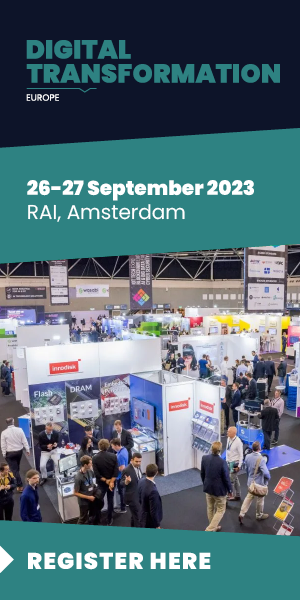
As the world’s largest beverage company, Coca-Cola serves more than 1.9 billion drinks every day, across over 500 brands, including Diet Coke, Coke Zero, Fanta, Sprite, Dasani, Powerade, Schweppes and Minute Maid.
Big data and artificial intelligence (AI) power everything that the business does – the global director of digital innovation, Greg Chambers, said: “Artificial intelligence is the foundation for everything we do. We create intelligent experiences. Artificial intelligence is the kernel that powers that experience.”
What Problem Is Artificial Intelligence Helping To Solve?
Marketing soft drinks around the world is not a “one-size-fits-all affair”. Coca-Cola products are marketed and sold in over 200 countries.
In each of these markets there are local differences concerning flavours, sugar and calorie contents, marketing preferences and competitors faced by the brand.
This means that to stay on top of the game in every territory, it must collect and analyse huge amounts of data from disparate sources to determine which of its 500 brands are likely to be well received. The taste of their most well-known brands will even differ from country to country, and understanding these local preferences is a hugely complex task.
How Is Artificial Intelligence Used In Practice?
Coca-Cola serves a large number of its drinks every day through vending machines. On newer machines, typically the customer will interact through a touch-screen display, enabling them to select the product they want and even customise it with “shots” of different flavours. The company has begun fitting these machines with AI algorithms allowing them to promote drinks and flavours that are most likely to be well received in the specific locations where they are installed.
The vending machines can even alter their “mood” depending on where they are located – with machines in a shopping mall displaying a colourful, fun persona, those in a gym more focused on achieving performance, and those in a hospital appearing more functional.
Coca-Cola also uses AI to analyse social media and understand where, when and how its customers like to consume its products, as well as which products are popular in particular localities. With over 90% of consumers making purchasing decisions based on social media content, understanding how its billions of customers are discussing and interacting with the brand on platforms like Facebook, Twitter and Instagram is essential to its marketing strategy. To do this, Coca-Cola analysed engagement with over 120,000 pieces of social content to understand the demographics and behavior of its customers and those discussing the products.
Another application of AI was in securing proof of purchase for the company’s loyalty and reward schemes. When customers were asked to manually enter 14-digit product codes printed on bottle caps into websites and apps to verify their purchases, uptake was understandably low due to the unwieldy nature of the operation.
To encourage more customers to engage with these schemes, Coca-Cola worked to develop image recognition technology that allows purchases to be verified by taking a single smartphone picture.
What Technology, Tools And Data Were Used?
Coca-Cola collects data on local drink preferences through the interfaces on its touch-screen vending machines – over 1 million of them are installed in Japan alone.
To understand how its products are discussed and shared on social media, the company has set up 37 “social centers” to collect data and analyse it for insights using the Salesforce platform. The aim is to create more of the content that is shown to be effective at generating positive engagement. In the past, the process of creating this content was carried out by humans; however, the company has been actively looking at developing automated systems that will create adverts and social content informed by social data.
It also uses image recognition technology to target users who share pictures on social media inferring that they could be potential customers. In one example of this strategy in action, Coca-Cola targeted adverts for its Gold Peak brand of iced tea at those who posted images that suggested they enjoy iced tea, or in which the image recognition algorithms spotted logos of competing brands. Once the algorithms determined that specific individuals were likely to be fans of iced tea, and active social media users who shared images with their friends, the company knows that targeting these users with adverts is likely to be an efficient use of their advertising revenue.
For purchase verification, off-the-shelf image recognition technology proved to be insufficient for reading the low-resolution dot matrix printing used to stamp product codes onto packaging. So, Coca-Cola worked to develop its own image recognition solution using Google’s TensorFlow technology. This used convolutional neural networks to enable machine recognition of codes that could often appear differently depending on when and where they were printed.
What Were The Results?
Analysis of the data from vending machines by AI algorithms allows Coca-Cola to more accurately understand how the buying habits of its billions of customers varies across the globe.
It uses this to inform new product decisions – for example, the decision to launch Cherry Sprite as a bottled product in the United States was taken because the data showed that this was likely to be a winning initiative.
Computer vision analysis and natural language processing of social media posts, as well as deep learning-driven analysis of social engagement metrics, allows Coca-Cola to produce social advertising that is more likely to resonate with customers and drive sales of its products.
Applying TensorFlow to create convolutional neural networks enabled scanners to recognise product codes from a simple photograph, increasing customer engagement with Coca-Cola’s different loyalty programs around the world.
Key Challenges, Learning Points And Takeaways
- If you sell hundreds of different products across multiple countries, perceptions and customer behaviour can vary greatly from market to market. Understanding these differences helps tailor specific messages for different markets, rather than relying on a one-size-fits-all approach
- When you’re dealing with global brands, user data from social media or generated through your own systems (such as vending machines) is vast and messy. AI provides a viable method of structuring this data and drawing out insights
- Computer vision technology such as image recognition tools can analyse millions of social media images to help a brand understand when, how and by whom its products are enjoyed
- As well as making marketing decisions, brands that are fully invested in AI are beginning to use it for designing new products and services
This is an edited extract from Artificial Intelligence in Practice: How 50 Successful Companies Used AI and Machine Learning to Solve Problems, by Bernard Marr, with Matt Ward (published by Wiley, April 2019).
About the authors: Bernard Marr is the founder and CEO of Bernard Marr & Co and an internationally best-selling business author, futurist, keynote speaker and strategic advisor to companies and governments. He is one of the world’s most highly respected voices and a renowned expert when it comes to topics such as artificial intelligence and big data. Marr advises many of the world’s best-known organisations on strategy, digital transformation and business performance. He is the author of Big Data in Practice: How 45 Successful Companies used Big Data Analytics to Deliver Extraordinary Results and Big Data: Using SMART Big Data, Analytics and Metrics To Make Better Decisions and Improve Performance, both published with Wiley.
Matt Ward is the research lead for Bernard Marr & Co. Matt has a background in investigative journalism and spent the last few years working closely with Bernard Marr on the latest technology topics. Matt is an expert and experienced writer in the field of business technology and artificial intelligence, where he has worked with companies such as IBM, Intel, Citibank and NASA.

Interested in hearing industry leaders discuss subjects like this and their use cases? Attend the co-located AI & Big Data Expo events with upcoming shows in Silicon Valley, London, and Amsterdam to learn more. Co-located with the IoT Tech Expo, Blockchain Expo, and Cyber Security & Cloud Expo.








